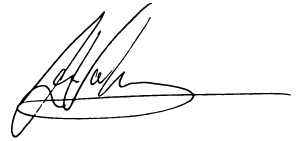- 2015’s baby formula bonanza
- 575% in 13 months
- Your mind vs. the herd mind
Baby formula. Think about it, its use and purpose in society.
Think about how important baby formula is to people. To mums and dads across the country, across the world.
Maybe you’ve got kids. Maybe you’ve got grandkids.
Ask yourself this: what would you pay for the health and wellbeing of those kids?
I’ve got two kids. I’d sell my cat and dog, and all possessions to make sure my kids were healthy, safe and well. I’d work ten jobs and sleep in a tent if it meant the best for them.
And if I relied on baby formula to feed them, as many mothers and fathers do around the world for a multitude of reasons, I’d pay whatever it took to feed my child.
Now, think about what would happen if there was no baby formula left. If the supermarket shelves were out, and no more was coming in. Think about what kind of frenzy that would create for the millions of people who need baby formula to feed their kids but can’t get any.
Until people discover just one company making it and one place to get it.
Can you imagine the mania that would ensue?
Supermarket fighter: 2015 edition
I tell you this semi-fictional story because this is not too far away from what took a small baby formula company in Australia from a market minnow, worth just $165 million in 2014, to a global supply chain goliath, just one year later, with a market valuation well over $1 billion.
In December 2015, people were fighting in supermarket aisles, clearing out boxes of baby formula and hoarding deliveries for two main reasons:
- They needed formula for their babies, legitimately.
- They were profiteers buying to resell on Chinese sites like Taobao (for as much as four to five times more) because of a radical shortage of baby formula in China.
Do you remember the great toilet paper shortage of 2020? Well, it was like that, but worse.
The shortage of formula in China meant that people had to look elsewhere for baby formula. Their shortage was because of a series of tainted formula incidents that ended up proving fatal. So, all confidence in local supply was gone, and they turned to a market that they knew they could get formula, with quality guaranteed… Australia.
It was the great formula boom of 2015. And it was a catalyst that took Bellamy’s Australia from a tiny, small-cap stock, with a stock price of just $1.31 in September 2014, to a high of $15.48 in December 2015.
That turns a $165 million company (Bellamy’s Australia’s market cap in late 2014) into well over a billion-dollar company, a year later. And shareholders along for the ride profited all along the way.
Eventually, Bellamy’s Australia would get sold for $1.5 billion in 2019 to… a Chinese government-backed company. But it was the epitome of a small-cap stock turned market darling.
I know this story so well because I not only rode that wave, but my readers in Australia, at the time, had Bellamy’s Australia in their buy list in September 2014, and we hit that SELL button hard in November 2015 for a monster gain in just 13 months of 575%. We didn’t get the bottom, and we certainly didn’t catch the top. But 575% in 13 months is exactly what I love about small-cap stocks.
I wanted to tell you this story at the very beginning of this week for a few reasons. And you’ll see over the rest of this week, how this jigsaw puzzle all comes together.
But first and foremost, the reason this story is relevant, and important to know is simply… baby formula.
That’s not the kind of thing most investors would think about, let alone invest in seeking out gains that span from a few hundred percent to 500% to 1,000% and more.
And therein lies the first thing that makes small-cap stock so interesting. They are weird, wonderful and cover all kinds of areas of investment that you’d, possibly, never even think about.
It’s easy for people to think that a semiconductor company can be one of those huge, elusive ten-bagger stocks. Or maybe some kind of “tech company”.
But baby formula? No. That’s not the first thing that comes to someone’s mind when hunting in this part of the market.
But that’s exactly the kind of thing that you should be looking at with small-cap stocks.
Two tools to give you a market advantage
When you’re investing in the small-cap part of any stock market, you should be on the hunt for those weird, crazy investment ideas that the mainstream would, typically, overlook.
That’s where you gain your first advantage as an individual, independent investor in the stock market. You don’t have an entire floor of “quant” analysts at your disposal. You aren’t connected to the stock market with dark fibre to place trades in nanoseconds like most good hedge funds can.
You must use two things to your advantage when it comes to maximising your investments in small-cap stocks:
- Your mind. You must be open-minded, a little left field, naturally contrarian in your ideas and have great conviction when you’ve formulated your own investment idea.
- Other people’s mind. Investor psychology is a wonderful thing. You can use the psychology of the crowd, the herd, to your advantage.
I recently saw a great post from Howard Marks of Oaktree Capital, that explained, “… to be successful at contrarianism, you have to understand (a) what the herd is doing, (b) why it’s doing it, (c) what’s wrong with it, and (d) what should be done instead and why”.
I think that’s the perfect approach to take into small-cap investing. It’s exactly how I’ve approached the market personally for 30 years, and professionally for the last 20 years. It’s how I think you should approach it, too.
It’s why baby formula appeared on my radar. It’s why other ideas that, at the time, seemed crazy, ended up being not so crazy, and led to some of the best returns that our organisation has ever seen.
I’ll tell you more about those in the coming days.
What’s coming tomorrow?
But for now, that’s it. I wanted to set the scene as to why we look at small-cap stocks. What makes them exciting, what success can look like and why, but most importantly, the key takeaway from today: the mindset and two mental tools you’ve got at your disposal to give you the advantage that you need when investing in small-cap stocks.
Keep an eye out tomorrow, where I get a little more practical and help you to understand what markets you should be looking at, why, what a small-cap stock is, the types of small-caps you should look at, and how you go about filtering down tens of thousands of stocks worldwide… into one investment.
Until tomorrow,

Sam Volkering
Editor, Fortune & Freedom



